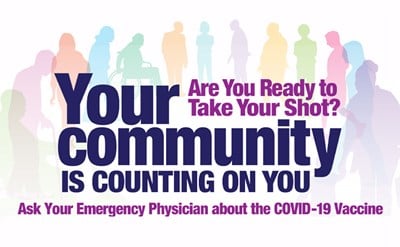WASHINGTON, D.C.—Emergency visits climbed to a record high of 141.4 million patient visits in 2014, according to new data from the Centers for Disease Control and Prevention (CDC). This confirms that visits have increased substantially since the implementation of the Affordable Care Act (ACA) — equivalent to the entire U.S. population visiting an emergency department every two and a half years, according to the American College of Emergency Physicians.
This is a 10-million visit increase over 2013 when there were 130.4 million visits, according to the CDC. The data also reveal an increasing severity and complexity of emergency visits likely related to the growth of retail clinics, urgent care centers and other venues for treating non-urgent medical problems. Only 4.3 percent of emergency patients had non-urgent medical symptoms.
"Clearly emergency departments are providing a valuable service that most patients can't get anywhere else," said Becky Parker, MD, FACEP, president of the American College of Emergency Physicians. "What other doctor will see you at two a.m. — no appointment necessary? Nearly two-thirds of visits occurred after business hours. The highest users of emergency care include patients over age 75, infants and nursing home residents."
Dr. Parker said that emergency visits are projected to exceed 150 million annually in the 2016 numbers, given the 2.1 percent average increase over the past 20 years.
The top reasons for emergency visits include chest pain, stomach pain, shortness of breath, injury and pain. Chronic disease was a factor in many emergency visits, with hypertension being the most frequent condition (21.1 percent), followed by diabetes (9.8 percent) asthma (8 percent), depression (8 percent), substance abuse (5.6 percent) coronary artery disease (5 percent), and COPD (4.9 percent). Injuries accounted for an estimated 40 million visits, with the highest injury rates among those aged 75 and older. However, this represents a decrease since 2009, when there were 45 million visits, reflecting the success of many injury prevention programs.
"A growing number of patients also are coming to emergency departments with mental health problems and opiate overdoses," said Dr. Parker. "While overall admission rates to the hospital have fallen, it's a different story for mental health patients, with more than a million of them needing admission to the hospital in 2014."
Waiting times continued to improve, with 32 percent of patients waiting less than 15 minutes to see a medical provider, and 68 percent being seen in under an hour. An estimated 10 percent of patients spent more than 6 hours in the emergency department.
This is the first year that Medicaid and CHIP accounted for the largest expected source of payment, at 34.9 percent. Next was private insurance (34.6 percent), Medicare (17.5 percent) and no insurance (11.8 percent).
"This is a success story," said Dr. Parker. "Injuries are down, and our patients are living longer and healthier lives. They are seeking care in the right places and at the times they need it. These data demonstrate highly skilled emergency physicians are delivering high-quality care, 24/7, 365 days a year. And daily they support the most financially and socially vulnerable of American society. Emergency physicians are proud of this work and dedicated to the mission of our emergency departments. "
 American College of Emergency Physicians
American College of Emergency Physicians







